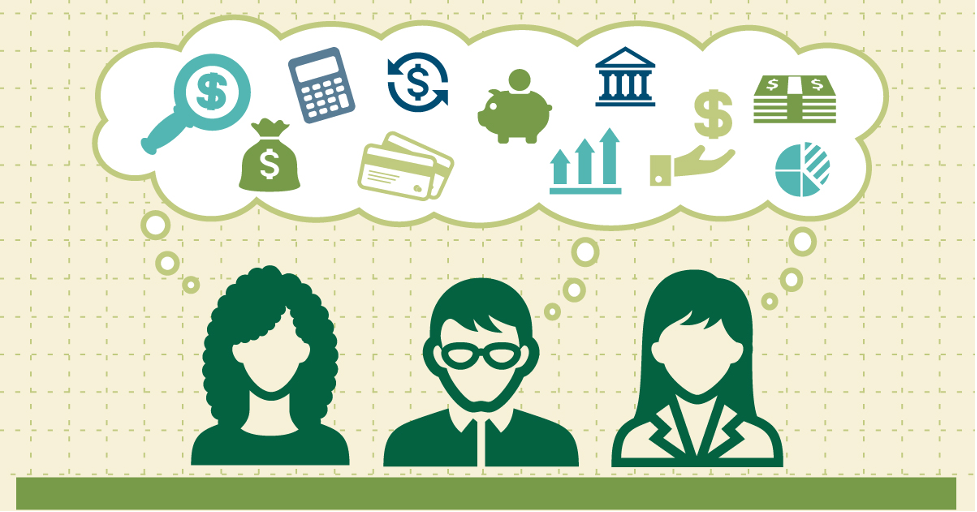Teaching Financial Literacy for Kids
Financial literacy for kids is an essential concept that teaches kids how to handle money well. Financial education is especially important at all grade levels, although it can frequently be an obstacle for students trying to digest and apply concepts taught to them. Fortunately, many options exist for incorporating financial education into the curriculum of most schools.
Although most kids are not given a lot of credit as far as personal finance goes, it is often the parents that truly shape the development of their children's financial literacy. When kids have a solid understanding of the concepts and skills involved in saving money and making money, they will be much more likely to use those concepts in their day to day lives. Unfortunately, this does not always happen. Many families just don't have the financial wherewithal to allow their kids to develop a solid financial education. It is up to the parents themselves to make sure that their kids are getting the best possible start in financial literacy.
Starting at a young age
When you start small, there are many opportunities to teach kids finance and personal finance. Take the time to start teaching your son or daughter about budgets and saving money. Explain the difference between the allowance and spendable funds, and the advantages and disadvantages of each. Show them the cost of some common items, like lunch at school and snacks at the cafeteria. Explain why all allowances should be saved, and how you would choose to spend them instead.
While it is important to start young with financial literacy, you don't have to stop teaching kids financial decisions when they are young. The most important thing is to provide them with the necessary tools to help them make smart choices when they are young. For example, you can start by purchasing a basic budgeting guide for young children. Then explain the concepts behind it, show how a family can plan for future goals, and give some ideas for saving money for a rainy day.
Even elementary students can benefit from some financial education. If your elementary students understand the concepts of budgeting, saving, and spending, they can learn a lot more than just fiscal accountability from you. By teaching kids fiscal literacy, you give them an understanding of money itself, and how it affects the other areas of their lives. This will give them a more responsible attitude toward spending, a stronger sense of value for money, and a clearer path toward earning and saving their own money for the future.
In middle and high school, there are many ways to help elementary students understand personal finance basics. One way is to participate in student activities that foster financial literacy, like Rotary Club, PTA meetings, and parent/child groups. These groups will also teach kids valuable financial skills like developing a budget, saving for college, and living within their means.
For middle and high school students, teaching kids financial literacy will most likely come through the classroom. There are a number of ways to incorporate financial education into a class curriculum. The most effective method is to use a combination of real-life experiences, hands-on practice, and teaching principles of budgeting, saving, and spending to encourage kids to develop good money management skills. By giving kids an overall understanding of these three areas of personal finance, you are teaching kids valuable life lessons that will last a lifetime.
Beyond elementary school, there are many programs available to teach kids about budgeting, saving, and spending. Many community colleges offer financial education programs in addition to regular classwork. High schools can also offer financial literacy programs through the student credit program or similar initiatives. For adults, there are a number of excellent books that teach kids about budgeting, saving, and spending. These books will help parents, as well as kids, get a clear understanding of the concepts of financial literacy and how they should be used.

Credit and Debit Cards For Kids
One great way to introduce your child to the world of credit is to get them a debit card for kids. Spendsafe is an easy debit card, which as an important learning instrument because most all online spending today takes place with some kind of card. You can use this card to educate your children about credit, spending it wisely, and allocating some of it towards savings for the future. Let us look at how you can get your kids a Spendsafe debit card. You will find that these cards have been specifically designed for kids and that they are safe to use.
When parents are shopping online with their kids, they want to make sure that the children are getting an accurate spend summary on their card so that they can watch what they are spending. This is where the spendsafe card comes in handy. If a parent wants to get the best out of any online shopping experience they will want to give their kids a chance to do the same. The debit card for kids does allow parents to monitor all spending on the internet.
Sponsored post.


Be the first to comment!
You must login to comment